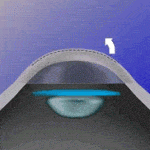If you are getting ready for LASIK in Los Angeles or considering your options, you probably have many questions you need answered. There are several myths and misconceptions about the LASIK procedure and it is often hard to decide whether or not this procedure is right for you. The following questions and answers below may help you prepare.
Top 4 questions to ask before LASIK Surgery:
When you are interested in or preparing for LASIK surgery you probably have questions regarding procedure, recovery, or even how it feels during surgery. Below are the top 4 questions you might ask your eye care specialist before your surgery.
How long will the procedure take?
The procedure itself takes only around 15 minutes per eye. The overall amount of time you will spend in the office will most likely be around 4 hours for completing paperwork, signing consent forms, repeating any testing, and postop observation.
How long is the recovery process?
Around 24 hours after your procedure you will be able to continue your daily activities. Your doctor will likely to want to see you 24-48 hours after the procedure for follow up exam. After a week or two you should fully recover from your procedure. Most of these protocols are for your safety, and each patient is different so you will need to pay attention to the specific details provided to you.
What are some side effects of LASIK?
There are a few possible side effects from the procedure such as dry eyes, glare & halos, and some partial loss of vision which is very rare. If you think you are having any side effects it is important to see your eye care professional right away.
What are some of the benefits of getting the LASIK procedure?
There are many benefits of LASIK – the major one being freedom from glasses or contact lenses. Additional benefits of LASIK procedures are little pain during the procedure, ability to be performed in combination with other treatments, and has a quicker recovery time.
Priscilla grew tired of her itchy eyes and contact lenses ripping, so she couldn’t be happier with her LASIK experience. Watch her story:



